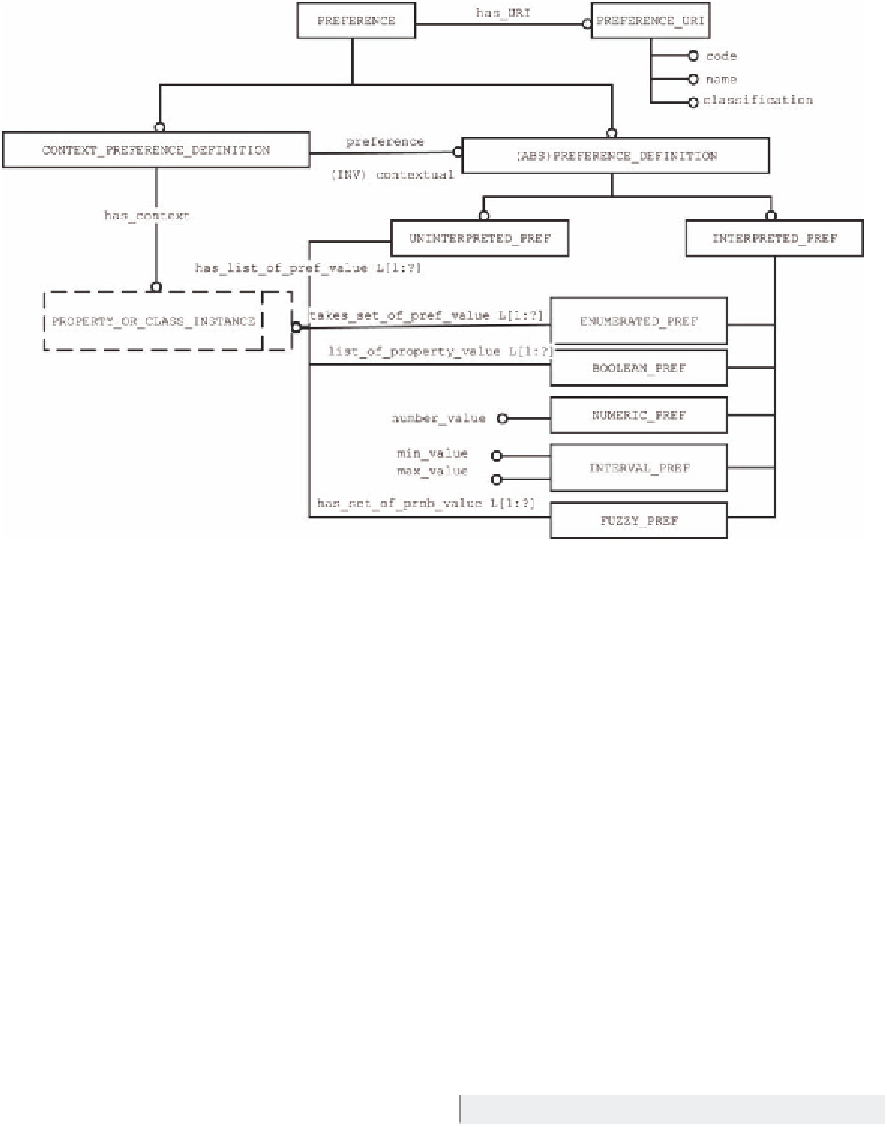Database Reference
In-Depth Information
Figure 3. Graphical representation of the preference model
following section details the preference model
and shows how it can be integrated to the OntoDB
system in order to express preferences on any set
of data semantically described by an ontology.
Three distinct elements, detailed below, com-
pose the model: i) the ontology model resource;
ii) the preference model; iii) and finally the link
between these 2 resources. The model is presented
on Figure 3.
The definition of the preference model com-
piles the different models found in the literature.
We have separated preferences that are generic
from those depending on the context where they are
defined. Preferences may be either interpretable
or non interpretable. By interpreted preferences,
we mean those preferences that are enumerated
by a given user or a system designer without any
associated interpretation procedure.
Each preference is associated with a set of
attributes that give a characterisation for this
preference. Attributes code, name and classifi-
cation represent respectively an identifier URI,
a name and the classification associated to this
preference (e.g., cost, star rating, or distance). Its
specification in EXPRESS (PREFERENCE_URI)
is shown in Table 6. As an example, we define the
preferences '
cheap
' o r '
expensive
', '
far
' o r '
near
'.
The corresponding characteristics are given by #2,
#3, #60, #61 instances of Table 6. Notice that the
PREFERENCE_URI entity is separately defined
and could be interpreted from a more general
knowledge model. An ontology for example can
be used to give a more precise description of the
semantic annotation of a preference.
Table 5. Representation of ontology model re-
source
PROPERTY_OR_CLASS_INSTANCE
TYPE PROPERTY_OR_CLASS_INSTANCE
SELECT (PROPERTY_VALUE, CLASS_VALUE);
END TYPE;






Search WWH ::

Custom Search